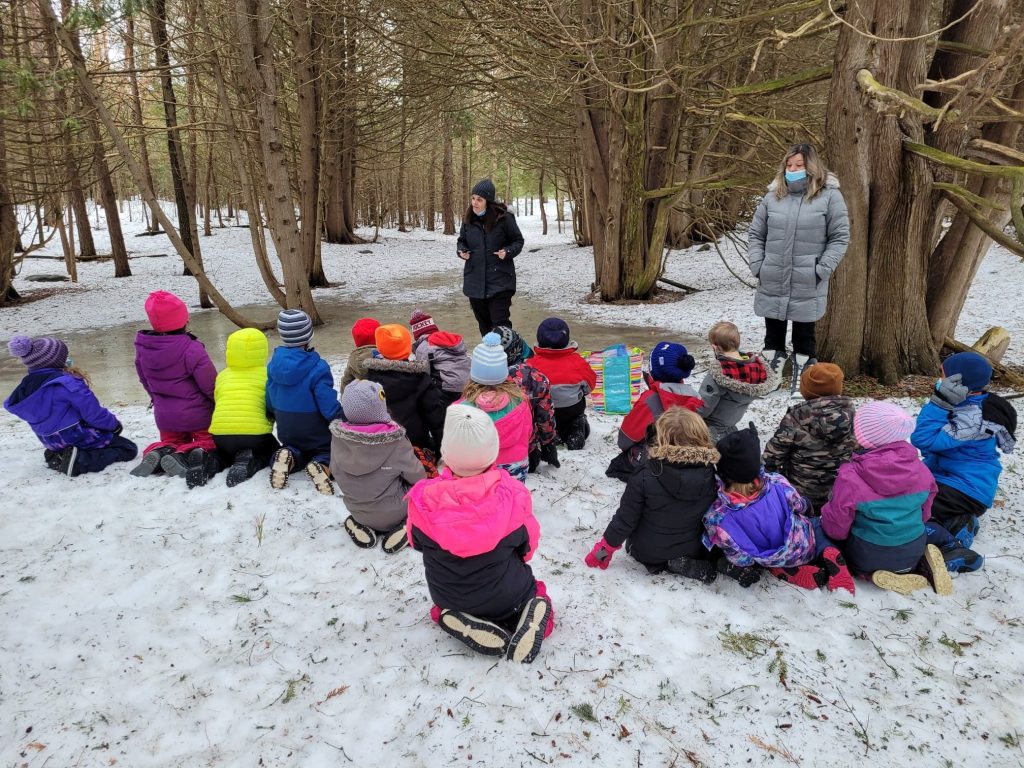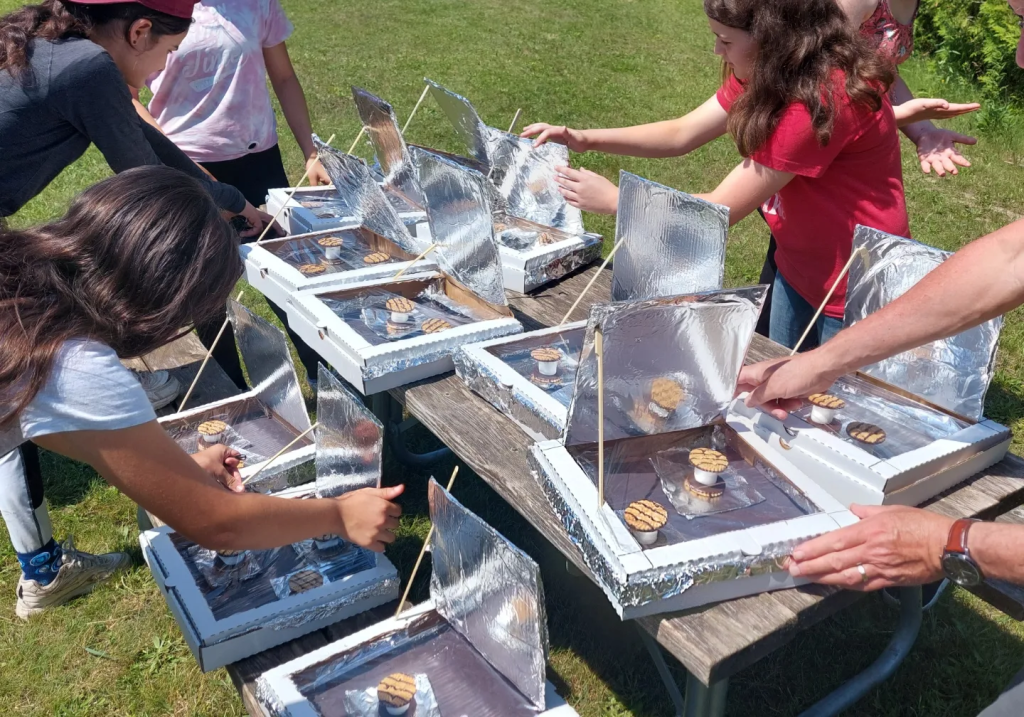As an educator in Peterborough, Ontario, and a passionate proponent for the natural world, I’ve often wondered how to help my students cultivate a connection to, and a sense of care for, the world around them. I’d been taking my class outside for several years for walks around the neighbourhood and free time outdoors, but I just wasn’t sure that this was doing the trick. I struggled to find time in the day to cover curriculum content, let alone take my students outside for any significant amount of time. It seemed impossible to spend more time outdoors while covering what I needed to cover! Yet, there was this nagging sense that the students needed exposure to experiences that promoted optimism and empowerment in the ongoing climate crisis. I wasn’t going to give up.

There are two key principles that favour the development of a stewardship ethic in children and youth. One is having plenty of time to play and learn outdoors, especially in natural areas. The second is having access to caring mentors who model awe, wonder, curiosity, respect, and responsibility toward all things. The many benefits of outdoor exploration are well documented in research: building self-esteem; reducing stress; stimulating creativity; enhancing concentration and conflict resolution skills; enhancing physical health; and encouraging cooperation, collaboration, and self-regulation, to name a few. But how do you move from theory to action in already over-stretched schedules and busy lives? That’s the true benefit of the Pathway Project! I found that bite-sized pieces and lots of support provided the recipe for my success. There are a small number of Pathway Landmarks geared to each age group. Here are a few examples.
Kindergarten: Visit a favourite outdoor place each week throughout all seasons. Share a nature-based book, song, nature poem, or game every week.
Primary: Find three ways to recognize and enjoy the change of each season. Meet the friends in your neighbourhood, including trees, flowers, insects, mammals, and birds.
Junior: Try at least five kinds of outdoor recreation that don’t need gasoline or electricity. Try growing a garden, setting up a bird feeder, catching insects, going fishing, and getting to know a habitat.
Intermediate: Become a “Citizen Scientist” by participating in a community project to monitor the health of wildlife species. Learn about at least two other cultures by meeting and talking with someone whose culture is different from yours.
Senior: Volunteer to help in your community in at least three different ways. Help to rehabilitate something damaged (such as an animal, waterway, or habitat).

Each class in the Pathway Project has a personal consultant to stay in touch and share ideas for age and seasonally-appropriate, easy-to-do activities while providing personal support for teachers unfamiliar with outdoor learning. The program also distributes seasonal newsletters with updates on community progress, success stories, and even more ideas for activities. There’s an active social media presence on Facebook, Twitter, and Instagram to further develop a sense of connection, community, and support. The Pathway website is full of ideas and resources linked to various grades.
This community partnership has developed a simple system for teachers to share ideas and build momentum by sending short reports on classroom activities through a mobile app or a website reporting window. In the three years since developing the Landmark reporting process, there have been 49,000 reports of Landmark experiences from local educators working with more than 12,000 students. Other teachers have sent in many positive comments, which reflect my experience with the program.
“I have been more intentionally programming and bringing indoor activities outside. We are using more natural materials in activities. We are more often going for a nature walk in our surroundings. It has helped us to make connections to the natural world around us.”
“Because of the Pathway Program, I have felt that it is OK to do lots of outdoor learning and free play. Pathway has shared the research that supports the value of nature’s connection to staff, administration, and the community. As a teacher, this helps me feel comfortable planning for learning outdoors.”
“I am more confident with my abilities in teaching and providing learning opportunities outdoors. My teaching has changed, and I know that almost anything that can be done inside can be adapted to the outdoor setting. It is 100% something that moving forward, will be a daily part of my teaching practice.”
One of the beautiful things about the Pathway Project is that its principles can be used by anyone who interacts with kids. I invite teachers across Canada to visit the Pathway website <pathwayproject.ca> to check out a collection of program ideas and to start their own journey on the Pathway to Stewardship and Kinship. I truly feel that using the Landmarks has allowed me to meet my goal of engaging my students as stewards of the natural world, while also covering subject areas related to the curriculum. I cannot recommend this resource enough!
Annie Corkery
Annie has worked in Peterborough as a teacher since 2015. With a background in environmental science, she loves finding reactive ways of getting her students outside and feeling connected with the natural world. Currently, she works for the Peterborough Victoria Northumberland and Clarington Catholic school board as a STEAM learning consultant and has been enjoying finding ways to connect subjects related to STEAM with outdoor learning.
This article is featured in Canadian Teacher Magazine’s Spring 2023 issue.
